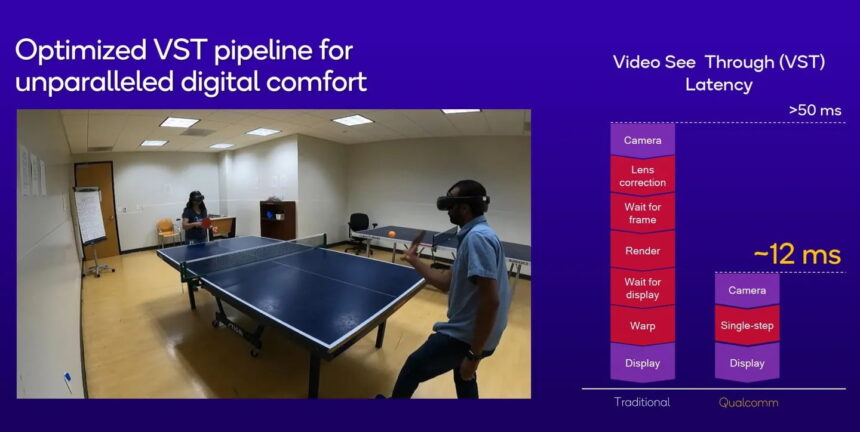Meta Quest 3 is powered by a vastly improved chipset, details here

Meta Quest 3 is the first headset to take advantage of the Snapdragon XR2 Gen 2, and the new chipset is a huge leap forward.
Qualcomm's first-generation chipset was already an important building block for standalone VR headsets: The Snapdragon XR2 Gen 1 powered the Quest 2, Pico 4, and Vive XR Elite, among others.
The successor was revealed at the same time as Meta Quest 3 and is based on the premium smartphone chipset Snapdragon 8 Gen 2, but optimized for virtual reality and mixed reality use cases. The Snapdragon XR2 Gen 2 is manufactured on a 4 nm instead of 7 nm process node and brings many improvements in terms of performance, power efficiency and features.
The chipset was developed in close cooperation with Meta, but will also be used in headsets from other manufacturers in the foreseeable future.
Snapdragon XR 2 Gen 2: The enhancements at a glance
Qualcomm and Meta have released a number of comparative data points, as well as information on new or improved features, which I have compiled for you below:
- The new GPU offers up to 2.5x peak performance with a 50 percent increase in power efficiency compared to the Snapdragon XR2 Gen 1.
- The performance of the CPU has been increased by more than 33 percent.
- The NPU (Neural Processing Unit) offers up to 8 times higher AI performance compared to the last-generation chipset.
- The Snapdragon XR 2 Gen 2 supports displays with up to 3K by 3K resolution, dynamic foveated rendering, space warp and game super resolution.
- On the sensor side, the Snapdragon XR2 Gen 2 can process data from up to ten cameras.
- The Snapdragon XR2 Gen 2 enables passthrough with an ultra-low latency of 12 ms, depending on various factors such as resolution and other sensor utilization.
- The chipset also supports the wireless standards Wi-Fi 7 and 6E as well as Bluetooth 5.3 and 5.2.
Dedicated areas of the SOC also handle and accelerate key headset tasks such as room tracking, passthrough, spacewarp, and super resolution. This offloads the CPU and GPU and reduces power consumption and latency.
New chipset boosts Meta Quest's graphics capabilities
Early graphics comparisons between Quest 3 and Quest 2 show how the performance gains translate to VR games, and how studios can use the extra performance to render higher resolution textures, improve lighting and shadow effects, or simply render more objects on the screen.
Regardless, nearly every VR game on Quest 3 will automatically render at a 30 percent higher resolution, regardless of any upgrades from developers. Thanks to the increased GPU power, Meta has increased the internal default resolution from 1,440 by 1,584 pixels (Quest 2) to 1,680 by 1,760 pixels (Quest 3). Of course, the resolution can still be increased, if developers wish so.
As always, Qualcomm has also developed a headset reference design that demonstrates the performance of the new chip and can be used or modified by other headset manufacturers.
The headset has two built-in OLED microdisplays, each with a resolution of 2,560 x 2,560 pixels and pancake lenses, and supports eye and hand tracking. A video shows that the passthrough latency is so low that you can play table tennis with the headsets.

Two persons playing ping pong with Qualcomm's reference design headset. | Image: Qualcomm
Note: Links to online stores in articles can be so-called affiliate links. If you buy through this link, MIXED receives a commission from the provider. For you the price does not change.